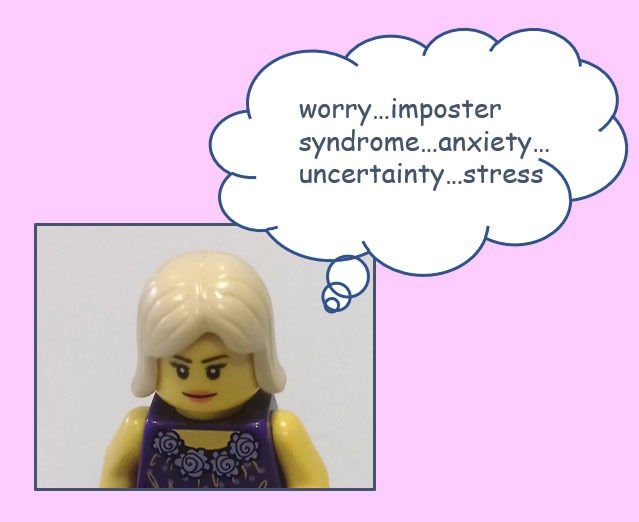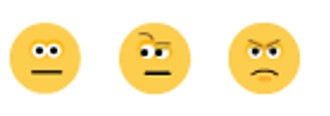This blog post reflects on my experiences in academia, considering the ways that a playful mindset has helped to overcome anxiety in various pedagogic contexts.

Hello again, as universities prepare for a new academic year besieged by unparalleled uncertainties, I reflect on the way that a playful spirit has served to mitigate my own anxieties alongside those of learners.
Ever since the early days of Writing PAD East Midlands, I've been interested in creatively alleviating the anxieties that students can experience within what can feel like the alien world of academia.
I had never really considered the role that playfulness has had in soothing my own anxieties as an academic until now.
My research on the links between playful learning and mental health recently led me to Maarten Koeners' tale of becoming a playful academic in his recent blog post: A Personal Story of becoming a Playful Academic. Here he discusses the way that play has allowed him to challenge his own mindset, enabling him to cut through the 'incessant mental noise' and find stillness and flow as an academic.
Reflecting on Maarten's story, I realised that my innately playful academic stance has had benefits not only for the wellbeing of learners, but for me as a teacher too. Below are some thoughts on this theme: I hope that you find something that may help in navigating your way through the shifting academic landscape.
Academic writing
Ok, this is the big one: I do know one or two colleagues who actively relish getting stuck into an academic article, paper or book chapter of the conventional kind, but most of us will experience a certain amount of anxiety when producing work for our peers.
For me, though I'm very comfortable with blogging, writing a typical academic article can fuel imposter syndrome, and the story I have told myself is the one we often hear from students: "I hate writing!". So how have playful, creative strategies helped me to deal with this?
Use alternative formats
In Talking to myself: reflections on Reframing, an article reflecting on experiences delivering a creative workshop at the HEA STEM conference, I took a light-hearted approach by approaching the article as an interview with myself. This allowed me to write in an informal style, and also provided a helpful vehicle for reflective writing: I was much more comfortable with this format, and so some of the anxieties about publishing in academic journals were mitigated. Extract from the article below.

Obviously not all publications will welcome more playful formats, and this will differ according to subject: I was fortunate that the Journal of Higher Education Pedagogies actively welcomed more creative writing approaches. It is worth seeking out though who do: the Journal of Writing in Creative Practice being a case in point: you can find an array of writing styles within, from the more usual academic formats to highly creative modes. Issue 11.2 edited by Alke Gröppel-Wegener and Fiona English, combining visual formats, an open letter as well as case studies is a great example of a more playful approach to academic writing.

Start with the visual
I am far more at home with visual, rather than written communication, so it makes sense for me to use activities such as drawing and mind mapping when approaching a piece of academic writing (see previous post Drawing deeper into research). Infographics can also be helpful in getting across the essence of your message quickly (see Information is Beatiful for excellent examples), and I welcome the move towards graphical abstracts for academic articles (these seem to be particularly popular in the social sciences). For the article on Reframing mentioned above, I was invited to submit both a graphical and the usual written abstract: unsurprisingly, I chose to tackle the visual version first! Being able to work in a medium that felt less daunting was a helpful way to both think about my topic (an arts-based learning tool called Reframing in the context of STEM education) and to quell anxiety.

Academic Presentations
Presenting at conferences is an expected part of being an academic, and can be a stressful experience: as with publishing in the academic sector, we are communicating with our peers, which can feel intimidating. How can we harness playful learning to lessen our own anxiety about presenting?
Give the audience something (playful) to do
Last year I delivered my first keynote presentation at the University of Northampton Research Conference, something I looked forward to and dreaded in equal measure. My subject was 'Becoming a Creative Researcher', so I hoped that the audience would be open to a playful activity or two. As attendees entered the space they found storytelling dice and instructions for a simple storytelling exercise for them to carry out in groups. This served the double purpose of helping both the audience and me as speaker to relax prior to the presentation: avoiding that akward silence when you are waiting for the audience to arrive. The dice below came from Flying Tiger.

Remote Learning
Of course, the above example relates to the pre-Covid world of face to face engagement: in the virtual environment, where much of our teaching will take place this year, we will need different playful strategies to support both our learners and ourselves. Teaching via Microsoft Teams, Blackboard Collaborate or whichever other platform you use, can add yet another layer of anxiety for academics. This may be due to lack of confidence or experience in using the software, or simply that this world feels alien and disconnected from the 'human touch' of our familiar learning environments.
How can playfulness soothe anxiety in delivering remote learning?
Use music
Music can soften the atmosphere and create a more relaxed mood, both in face to face and remote learning. I have used gentle, instrumental music to fill in the time when learners are joining the session, to create a less formal feel: I find that this helps to reduce anxieties about what may be an alien way of learning among students, and the music can help me to feel a little calmer and more 'centred'.
Music is also useful when you are asking learners to carry out 'hands-on' activities such as making Lego models, again preventing what can feel like an oppressive silence, and encouraging learners to chat with one another while they build. This can work just as well with online sessions. Musical choice is very personal, and some learners will prefer to listen to their own choice of music or to have none at all, but playlists such as Music for Concentration on Spotify and albums such as Brian Eno's Ambient 1: Music for Airports (below) have worked well.
Use emojis
If your remote learning platform has the option to use emojis within the 'chat' function, these can be a playful way to both acknowledge and sooth academic anxiety. For example, emojis can be used to tell a story (perhaps using three emojis maximum) about how each person is feeling that day, helping learners and teacher alike to feel more connected. They can also bring an element of humour and light-heartedness to the online environment: excellent medicine for easing tension.

Final word
So can playful learning alleviate academic anxiety? I think Maarten Koeners answers this perfectly: 'play and playfulness can have a positive effect on learning while simultaneously counteracting a number of barriers to creativity and wellbeing.'
If you'd like to read about the way that colleagues within the playful learning community have been responding to these turbulent times, look no further than Alison James' recent blog post Playing in a Pandemic: informative, humurous and brimful of positive examples , while acknowledging the challenges that playful educators are facing within the virtual campus.
Back soon,
Julia
Komentarze